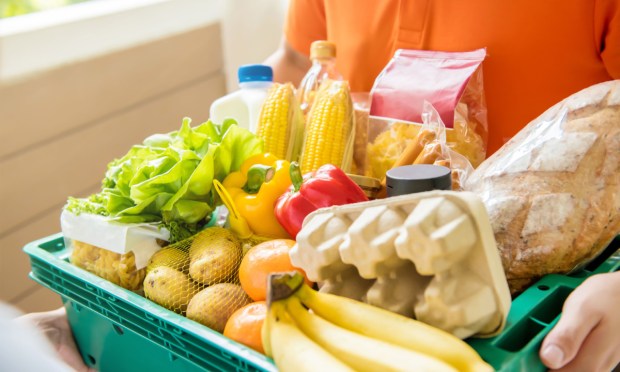Save Mart CDO: Grocery Shoppers Demand Access on Aggregators

With consumers already loyal to third-party aggregators, grocers are increasingly finding that they need to get on board if they want to reach their customers.
In an interview with PYMNTS, Tamara Pattison, senior vice president and chief digital officer at The Save Mart Companies, which spans about 200 grocery locations across three banners, said the merchant’s decision to partner with Uber Eats follows consumer demand trends.
“[We’re] looking at [our] footprint and understanding where there is some level of penetration [with] existing marketplaces. Making sure that our shoppers see us participating in those marketplaces is critical,” Pattison said. “We want to make sure that we’re not dictating to our shoppers how to engage with us, but that we are looking at their behavior and finding ways to ensure that we can meet them wherever they want us to be.”
Pattison noted that the company’s Lucky and FoodMaxx brands operate primarily in “highly dense urban areas,” while its Save Mart chain has a presence in “more of the suburban-valley-based areas,” the types of locations in which aggregators such as Uber Eats are “gaining traction,” she said.
Indeed, PYMNTS Intelligence finds that online grocery penetration is much stronger in urban areas than in other kinds of locations. According to data from the study “ConnectedEconomy™ Monthly Report: The Urban-Rural Health Divide Edition,” which drew from a survey of nearly 2,500 U.S. consumers, 63% of those living in urban areas engage with grocers digitally, while only 29% of those in suburban locations said the same, and just 20% of those in rural environments.
The third-party aggregator market is evolving for merchants, as more restaurant aggregators look to compete with Instacart for consumers’ on-demand grocery delivery spending, adding more retailers to their platforms and advertising their non-restaurant offerings more pointedly to consumers.
“I think all grocers are looking at ensuring we continue to maintain a level of penetration as more and more marketplaces get into supporting grocery,” Pattison said.
Additionally, she said consumers’ orders on these aggregators represent a different occasion than their typical “pre-planned” brick-and-mortar grocery shopping trip, relating more to last-minute needs and purchases with smaller baskets.
To that point, the PYMNTS Intelligence study “Consumer Interest in an Everyday App,” created in collaboration with PayPal and based on a survey of more than 2,200 U.S. adults, reveals that 39% of consumers (or 45% of those who shop for groceries) are omnichannel grocery customers, using a combination of connected devices and more traditional means to make such purchases.
Looking ahead, Pattison expects artificial intelligence (AI) to improve omnichannel grocery efficiency at every part of the process, from procurement to customer service. However, she believes that grocers will be followers rather than leaders in this area.
“I think we’re all seeing this evolve at a hyper speed, so how do we potentially integrate that as a support mechanism in the stores, whether it’s with associates or direct customer engagement?” Pattison said. “I don’t think grocery is going to be the space that really pioneers that. I think some of the specialty retailers will be.”

